In the electrifying world of startups, the electric vehicle (EV) sector is sparking unprecedented interest.
As we stand on the precipice of a transportation revolution, the race to secure funding for EV innovations is more intense than ever.
Enter the electric vehicle pitch deck: your golden ticket to capturing the attention of discerning investors.
Hey, I’m Viktor, a pitch deck expert, and a presentation expert. Over the past 13 years, I’ve helped businesses secure millions in funding thanks to my approach and I’m sharing it here in this electric vehicle pitch deck guide. I also share alot of my experiences through Linkedin as well. Let’s connect!
This guide was made based on my experience with EV startups, and in particular an electric vehicle startup called One. You will find samples of the slides I created for that startup, in the pitch deck examples section of this guide.
Whether you’re a seasoned entrepreneur or a struggling innovator, understanding the nuances of an effective pitch deck is crucial.
After all, in the high-stakes game of startup funding, it’s not just about having a groundbreaking idea; it’s about presenting it in a way that charges up your audience.
Ready to supercharge your pitch? Let’s dive into what makes an electric vehicle pitch deck truly stand out.
Book a free personalized pitch deck consultation and save over 20 hours of your time.
Join hundreds of successful entrepreneurs who’ve transformed their pitch decks with my help.
Let me develop an investor ready deck by using my hands-off approach, which includes: market research, copy, design, financials, narrative and strategy.
One week turnaround time.
The least you will get is 10 actionable tips & strategies to own that next presentation, worth $599, for free.

- What is an electric vehicle pitch deck?
- How important is it to have a great electric vehicle pitch deck when asking for funding?
- What Does an Electric Vehicle Pitch Deck Include?
- How to Create an Electric Vehicle Pitch Deck Presentation?
- The Exact Electric Vehicle Pitch Deck Slide Structure You Can Steal And Use
- Unlock My Proven Pitch Deck Template That Drove Over $100 Million in Funding
- Why is it important to understand your audience when creating an electric vehicle pitch deck?
- Why is it important to craft a compelling story when creating an electric vehicle pitch deck?
- How important are design and visuals when creating an electric vehicle pitch deck?
- How to prepare for questions and objections when presenting an electric vehicle pitch deck?
- What nobody will tell you: Crucial considerations to keep in mind when developing your EV pitch deck and business
- 1. The Real Impact of Regulations and Policy Changes
- 2. The Importance of Battery Technology and Supply Chain Resilience
- 3. The Underestimated Value of User Experience (UX)
- 4. The Competitive Landscape Beyond Traditional Automakers
- 5. The Sustainability of Your Business Model Beyond the Product
- 6. The Story Behind the Numbers
- 7. The Human Element
- Market Analysis and EV Industry Trends for Your Pitch Deck
- Sustainability and Environmental Impact for Your EV Pitch Deck
- Innovations in EV Technology for Your Pitch Deck
- Regulatory and Policy Landscape for Your EV Pitch Deck
- Customer Acquisition and Market Penetration Strategies for Your EV Pitch Deck
- Financial Projections and Funding Requirements for Your EV Pitch Deck
- Competitive Analysis for Your EV Pitch Deck
- Team and Expertise for Your EV Pitch Deck
- Product Development and Roadmap for Your EV Pitch Deck
- How to creatively pitch your EV startup pitch deck?
- What are the best practices when creating an electric vehicle pitch deck?
- EV Pitch Deck Example
- EV Startups And How Much They Raised
- EV Pitch Deck Ideas To Inspire You
- Questions That Investors Ask Electric Vehicle Pitch Deck Owners:
- Conclusion
- More Resources:
What is an electric vehicle pitch deck?
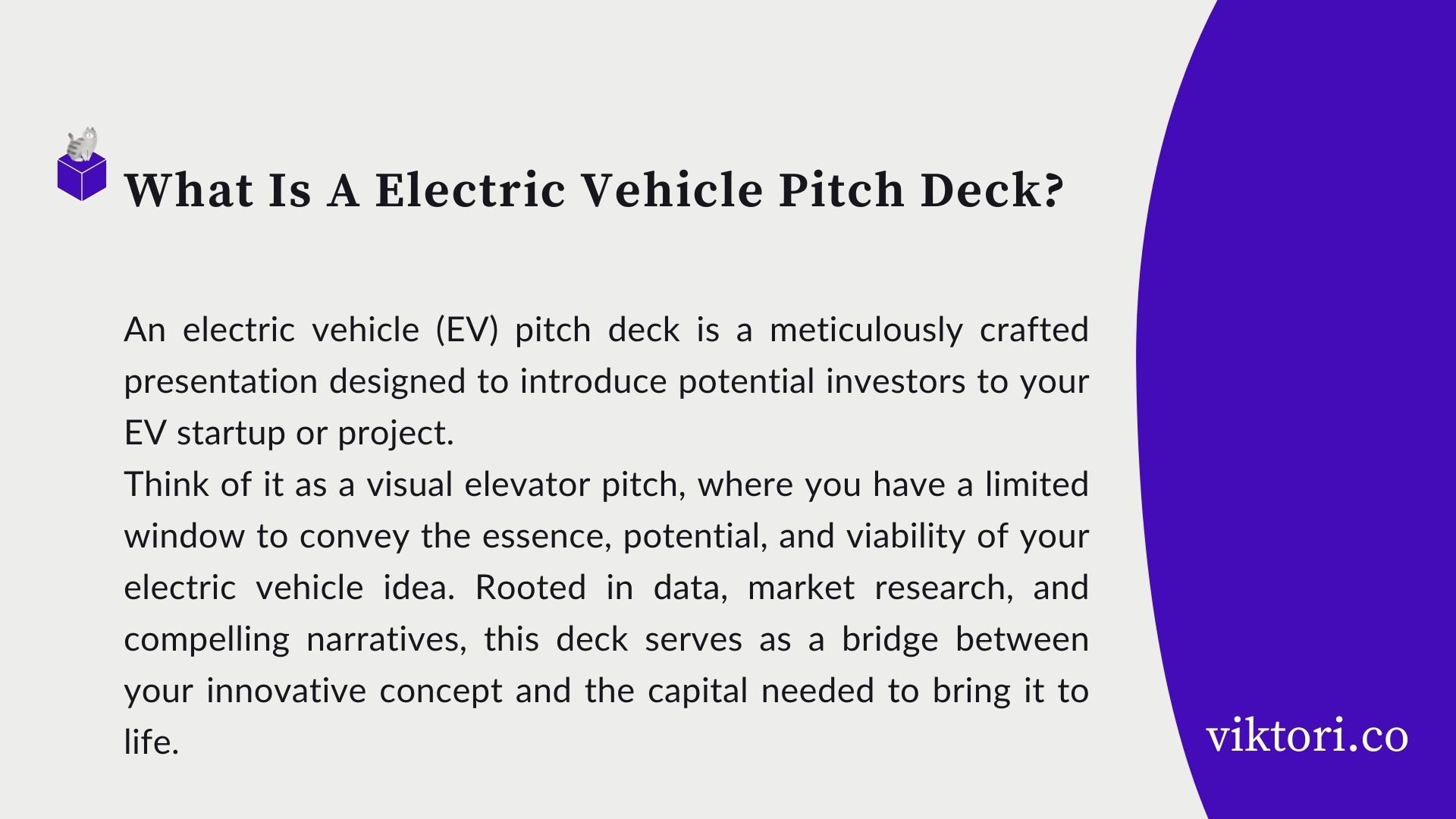
An electric vehicle (EV) pitch deck is a meticulously crafted presentation designed to introduce potential investors to your EV startup or project.
Think of it as a visual elevator pitch, where you have a limited window to convey the essence, potential, and viability of your electric vehicle idea. Rooted in data, market research, and compelling narratives, this deck serves as a bridge between your innovative concept and the capital needed to bring it to life.
At its core, the EV pitch deck is more than just a collection of slides; it’s a strategic tool that encapsulates your business model, value proposition, market analysis, competitive landscape, and financial projections, all tailored to the electric vehicle industry.
As the EV market accelerates, having a pitch deck that resonates with investors can be the difference between cruising on the highway to success or being left in the dust.
Up next, let’s delve into the significance of a top-tier electric vehicle pitch deck when you’re on the hunt for funding.
How important is it to have a great electric vehicle pitch deck when asking for funding?
In the rapidly evolving landscape of electric vehicles (EVs), securing funding is paramount. But how pivotal is a top-notch EV pitch deck in this endeavor?
Research underscores the significance of a well-prepared pitch deck for EV startups. A study by Liu et al., 2020 emphasizes that a strong pitch deck provides theoretical support for EV companies to develop promotion strategies, effectively boosting the popularity of electric vehicles.
Another research by Kieckhäfer et al., 2017 indicates that manufacturers’ portfolio decisions, often showcased in pitch decks, have a profound influence on the market development of EVs.
In essence, a compelling EV pitch deck is not just a nice-to-have—it’s a necessity. It’s the linchpin that can sway investors, making them believe in your vision and invest in your EV dream.
So, you might be wondering, what exactly should this pitch deck encompass? Let’s explore its key components next.
What Does an Electric Vehicle Pitch Deck Include?
An electric vehicle (EV) pitch deck is a comprehensive presentation that encapsulates the essence of your EV business or project.
It’s the tool that introduces potential investors to the world you envision and the roadmap to get there. Here’s a breakdown of what a stellar EV pitch deck typically includes:
- Introduction: A brief overview of your company or project, setting the stage for what’s to come.
- Problem Statement: Highlight the challenges or gaps in the current EV market that your business aims to address.
- Solution: Present your unique solution or product that addresses the identified problem. This could be a novel EV design, a groundbreaking charging solution, or an innovative business model.
- Market Analysis: Dive into the current EV market size, growth potential, and target audience. Showcase research on market trends and future projections.
- Business Model: Outline how you plan to make money. This could include sales strategies, pricing models, and revenue streams.
- Competitive Landscape: Identify key competitors in the EV space and differentiate your offering from theirs.
- Go-to-Market Strategy: Detail your plan to launch and promote your product or service, capturing your target market’s attention.
- Financial Projections: Provide forecasts for revenue, expenses, and profitability over a set period, usually 3-5 years.
- Team: Introduce the key players in your team, emphasizing their expertise and relevance to the EV industry.
- Ask: Clearly state what you’re seeking from investors, whether it’s funding, partnerships, or other resources.
- Milestones & Roadmap: Showcase the progress you’ve made so far and outline the future milestones you aim to achieve.
- Closing & Contact Information: Wrap up your pitch and provide details for investors to reach out for further discussions.
Remember, while these are the typical components, the magic lies in tailoring your pitch deck to resonate with your specific audience, ensuring it’s both informative and compelling.
Now that we’ve covered the essentials, let’s delve into the art of crafting an impactful EV pitch deck presentation. Shall we?
How to Create an Electric Vehicle Pitch Deck Presentation?
Creating an electric vehicle (EV) pitch deck presentation is both an art and a science. It’s about striking the right balance between data-driven insights and compelling storytelling.
Here’s a step-by-step guide to crafting an impactful EV pitch deck presentation:
- Understand Your Audience: Before you start, get a clear picture of who your investors are. Are they familiar with the EV industry? What are their primary concerns? Tailor your content to address their specific interests and questions.
- Start Strong: Your opening slide should grab attention immediately. Use a powerful image, a compelling quote, or a startling statistic related to the EV market.
- Narrative Flow: Structure your presentation like a story. Begin with the problem, introduce your solution, and then delve into the details, ensuring a logical flow.
- Simplicity is Key: Avoid clutter. Each slide should convey one main idea. Use visuals, infographics, and minimal text to make your point.
- Use High-Quality Visuals: Incorporate images of your EV product, prototypes, or any other relevant visuals. Ensure they are high-resolution and relevant to the content.
- Data-Driven Insights: Back your claims with research and data. Use charts, graphs, and statistics to validate your points, but ensure they are easy to understand at a glance.
- Engage with Stories: Share success stories, customer testimonials, or case studies that highlight the potential and impact of your EV product or service.
- Practice Makes Perfect: Once your pitch deck is ready, rehearse your presentation multiple times. This will help you refine your delivery and anticipate potential questions.
- Interactive Elements: Consider incorporating short videos, animations, or interactive demos, especially if they can showcase your EV product in action.
- Consistent Design: Maintain a consistent design theme throughout, including fonts, colors, and slide layouts. This enhances professionalism and readability.
- End with a Call to Action: Clearly state what you want from your audience, whether it’s funding, feedback, or partnerships.
- Feedback Loop: Before the final presentation, share your pitch deck with trusted colleagues or mentors. Their feedback can offer invaluable insights and help refine your approach.
- Stay Updated: The EV industry is rapidly evolving. Ensure your data, market trends, and technological advancements are current.
- Prepare for Q&A: Anticipate potential questions and prepare concise answers. This will boost your confidence and credibility during the presentation.
Remember, your pitch deck is more than just a presentation; it’s a reflection of your passion, dedication, and vision for the EV industry. Craft it with care, and it can open doors to invaluable opportunities.
Check out the in depth version of this ev pitch deck guide outline, EV charging paywall pitch deck outline or this smart grid EV pitch deck outline.
Up next, let’s dive into a tried-and-tested slide structure you can adopt for your EV pitch deck. Excited?
The Exact Electric Vehicle Pitch Deck Slide Structure You Can Steal And Use
Crafting a pitch deck is an art, but there’s a tried-and-true structure that many successful startups have utilized. Here’s a detailed slide structure tailored for an electric vehicle (EV) pitch deck that you can adapt and make your own:
- Title Slide:
- Company logo
- Tagline (a succinct description of what you do)
- Date
- Presenter’s name and title
- Introduction/Overview:
- Brief introduction to the company or project
- Vision or mission statement
- The Problem:
- Describe the current challenges or gaps in the EV market
- Use statistics or real-life examples for emphasis
- Your Solution:
- Introduce your EV product or service
- Highlight its unique selling points and benefits
- Market Analysis:
- Size of the target market
- Growth potential and trends in the EV industry
- Target audience demographics and psychographics
- Business Model:
- How you plan to make money
- Pricing strategy, revenue streams, and sales channels
- Competitive Landscape:
- Key competitors and their offerings
- Your competitive advantage or differentiator
- Go-to-Market Strategy:
- Marketing and sales strategies
- Partnerships or collaborations
- Milestones and timelines
- Financial Projections:
- Revenue forecasts for the next 3-5 years
- Key financial metrics and assumptions
- Break-even analysis, if applicable
- Team:
- Profiles of key team members, their roles, and expertise
- Highlight any relevant experience in the EV industry
- Ask:
- Clearly state what you’re seeking: funding amount, partnerships, etc.
- Terms of the investment or partnership
- Milestones & Roadmap:
- Past achievements and accolades
- Future goals, product launches, or expansion plans
- Testimonials & Case Studies (optional)
- Quotes from satisfied customers or partners
- Success stories or case studies that validate your product’s potential
- Closing & Contact Information:
- A thank-you note
- Contact details: email, phone number, and website
- Appendix (optional):
- Additional data, research, or details that might be useful during the Q&A
Remember, while this structure provides a solid foundation, it’s essential to tailor your pitch deck to your specific business and audience. Keep it concise, visually appealing, and ensure each slide adds value to your narrative.
Unlock My Proven Pitch Deck Template That Drove Over $100 Million in Funding
In the fast-paced world of electric vehicles, captivating potential investors is crucial. This demands a pitch deck that effectively communicates the essence of your EV innovation. While platforms like Canva, Slidesgo, and Google Slides offer ready-to-use templates, they often fall short of aligning perfectly with your brand’s vision, leading to hours of tweaks and adjustments.
Here’s a brighter solution.
Choose a custom-crafted template structure, saving you time and ensuring your pitch deck resonates with your brand’s distinct flair. Using this approach, I’ve empowered my clients to design pitch decks that have successfully raised significant funding, partnerships, and investments, totaling more than $100 million.
If you’re on the hunt for a streamlined approach to craft a pitch deck tailored for your EV initiative, reach out. Let’s harness the structure that’s already accelerated countless success stories. Get your custom version of the structure.
Why is it important to understand your audience when creating an electric vehicle pitch deck?
Understanding your audience is paramount when creating an electric vehicle (EV) pitch deck, and here’s why:
- Tailored Messaging: Different investors have varied priorities. Some might be keen on technological innovation, while others focus on market potential or sustainability. By understanding your audience, you can tailor your message to resonate with their specific interests and concerns.
- Building Trust: Demonstrating that you’ve done your homework and understand the investor’s past ventures, interests, and successes can foster trust. It shows you’re not just casting a wide net but are genuinely interested in forming a symbiotic relationship.
- Effective Communication: Knowing your audience allows you to adjust the complexity of your language. For instance, if your audience is well-versed in the EV sector, you can use industry jargon. However, if they’re general investors, simplifying technical terms might be more effective.
- Anticipating Questions: By understanding what’s important to your audience, you can anticipate potential questions or concerns they might have. This preparation can lead to a smoother Q&A session and demonstrate your thoroughness.
- Emotional Connection: People invest in people, not just ideas. By understanding your audience’s values and motivations, you can craft a narrative that emotionally resonates with them, making them more likely to invest in your vision.
- Efficient Use of Time: Investors often have limited time. By understanding their primary interests, you can prioritize the most relevant sections of your pitch, ensuring they get the most critical information upfront.
- Closing the Deal: Ultimately, understanding your audience increases the likelihood of securing funding. If you can address their specific needs, alleviate their concerns, and align with their values, you’re in a stronger position to persuade them to invest.
In essence, an EV pitch deck isn’t just about presenting facts. It’s about crafting a narrative that aligns with your audience’s worldview, interests, and aspirations. After all, the art of persuasion is rooted in understanding.
Speaking of crafting narratives, let’s explore the significance of storytelling in your pitch deck. Intrigued?
Why is it important to craft a compelling story when creating an electric vehicle pitch deck?
Crafting a compelling story for your electric vehicle (EV) pitch deck is not just a stylistic choice; it’s a strategic imperative. Here’s why storytelling plays a pivotal role:
- Human Connection: At its core, storytelling is a deeply human endeavor. It allows us to connect, relate, and empathize. By weaving a narrative around your EV idea, you’re not just presenting cold facts; you’re inviting investors into a journey, making them more emotionally invested.
- Memorability: Facts and figures can often blur together, but stories stick. A well-told narrative about the inception of your EV idea, the challenges faced, and the vision for the future can make your pitch stand out in an investor’s mind.
- Simplifying Complexity: The EV industry can be technically intricate. Storytelling can help break down complex concepts into relatable scenarios, making it easier for investors to grasp the essence of your proposition.
- Building Credibility: Sharing real-life anecdotes, challenges overcome, and milestones achieved adds authenticity to your pitch. It shows investors that you’ve been in the trenches, learned from experiences, and are committed to your vision.
- Driving Engagement: A well-crafted story keeps your audience engaged. Instead of passively listening to a series of facts, they become active participants, eager to know what happens next in your narrative.
- Highlighting Value Proposition: Through storytelling, you can underscore the unique value your EV solution brings to the market. By illustrating real-world scenarios where your product makes a difference, you make its benefits tangible.
- Inspiring Action: A compelling story often culminates in a call to action. By taking investors on a narrative journey, you prime them to take the desired action, whether it’s investing, partnering, or offering mentorship.
- Showcasing Brand Identity: Your story isn’t just about the product; it’s about your brand’s ethos, values, and vision. It gives investors a glimpse into your company’s culture and what it stands for.
In the world of pitch decks, where data and analytics reign supreme, storytelling infuses soul into your presentation. It bridges the gap between logic and emotion, making your EV proposition not just understood, but felt.
To help you improve your narrative, check this selection on the best books for pitching. The authors have won billions in $ thanks to their ability to create stories when pitching and are sharing their methods with you.
Now, while a good story is vital, the visual appeal of your pitch deck can’t be overlooked. Curious about the role of design and visuals? Let’s delve into that next.
How important are design and visuals when creating an electric vehicle pitch deck?
Design and visuals play a crucial role in the effectiveness of an electric vehicle (EV) pitch deck.
While content is the backbone, design is the vessel that delivers your message in a digestible and impactful manner. Here’s why prioritizing design and visuals is essential:
- First Impressions Matter: Before you utter a word, the design of your pitch deck sets the tone. A polished, professional design signals seriousness, preparation, and attention to detail, immediately earning you credibility.
- Enhanced Comprehension: Visual aids, such as charts, graphs, and infographics, can simplify complex data, making it easier for investors to grasp key concepts quickly. For instance, a visual representation of the EV market growth can be more impactful than just stating numbers.
- Engagement Boost: A visually appealing pitch deck keeps the audience engaged. Varied visuals, from images of your EV prototypes to animations showcasing your technology, can captivate your audience’s attention.
- Emotional Resonance: Visuals evoke emotions. Whether it’s the excitement of seeing a sleek EV design or the urgency conveyed through a graph showing dwindling fossil fuel reserves, visuals can amplify the emotional impact of your narrative.
- Storytelling Amplified: As discussed earlier, storytelling is vital. Visuals can enhance this narrative, providing a visual journey that complements your verbal or written story.
- Branding Consistency: The design of your pitch deck should align with your brand’s colors, fonts, and overall aesthetic. This consistency reinforces brand recognition and portrays a unified image.
- Highlighting Key Points: Strategic use of design elements like color, contrast, and typography can draw attention to key points, ensuring they stand out and are remembered.
- Reducing Cognitive Load: A wall of text can be overwhelming. Breaking it up with visuals, whitespace, and structured design makes the content more digestible, reducing the cognitive effort required to process the information.
- Facilitating Flow: Good design ensures a logical flow from one slide to the next, guiding the audience seamlessly through your pitch narrative.
- Memorability: A well-designed pitch deck, with compelling visuals, is more likely to be remembered. It differentiates your presentation from the myriad of text-heavy pitches investors might see.
In essence, while content provides the substance of your EV pitch deck, design and visuals determine its delivery and reception. They transform your pitch from a mere presentation into a memorable experience.
Hold on. You might want to check my list on the best presentation books. Why?
It’s 1O crucial books that will help you improve the design and structure of your presentations, besides improving its delivery. Check it out below.
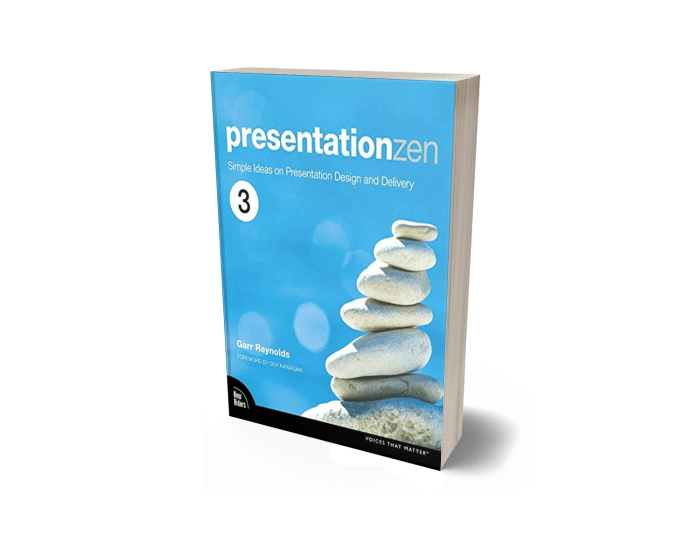
With a visually compelling pitch deck in hand, it’s essential to be prepared for what comes next: questions and objections. Ready to delve into that realm?
How to prepare for questions and objections when presenting an electric vehicle pitch deck?
Preparing for questions and objections is a critical aspect of presenting an electric vehicle (EV) pitch deck.
Anticipating and addressing these concerns not only showcases your expertise but also builds trust with potential investors. Here’s how to effectively prepare:
- Deep Dive Research: Understand the EV industry inside out. Stay updated with the latest trends, technological advancements, market dynamics, and potential regulatory challenges. The more informed you are, the better equipped you’ll be to address questions.
- Rehearse with a Diverse Group: Before the actual pitch, present to colleagues, mentors, or friends from varied backgrounds. They’ll likely ask questions you haven’t considered, giving you a broader perspective.
- Anticipate Common Questions: Some questions are almost guaranteed, such as:
- “What differentiates your product from competitors?”
- “How do you plan to scale?”
- “What’s your go-to-market strategy?” Prepare concise and compelling answers for these.
- Acknowledge What You Don’t Know: It’s okay not to have all the answers. If faced with a question you can’t answer, acknowledge it honestly and commit to getting back with the information.
- Develop a FAQ Document: Create a document addressing frequently asked questions. This not only serves as a personal reference but can also be shared with investors post-presentation.
- Address Objections Head-On: If you’re aware of potential objections or concerns, address them proactively in your pitch. This demonstrates transparency and can preempt some objections.
- Stay Calm and Collected: It’s natural for emotions to run high, especially if faced with challenging questions. However, maintaining composure and responding calmly enhances your credibility.
- Practice Active Listening: Ensure you fully understand the question before responding. If in doubt, clarify. This shows respect for the investor’s perspective and ensures you’re addressing their actual concern.
- Use Data to Back Claims: When faced with skepticism, data is your ally. Support your responses with relevant statistics, case studies, or research to bolster your credibility.
- Engage in Role Play: Simulate a pitch environment with a colleague, where they play the role of a skeptical investor. This exercise can help you refine your responses and improve your adaptability.
- Stay Open to Feedback: Not all objections or questions are negative. Some can offer valuable insights or highlight areas of improvement. Embrace them as opportunities to refine your business strategy.
- Follow Up: After the pitch, if there were questions you couldn’t answer on the spot, ensure you follow up promptly with the required information.
Remember, questions and objections are a natural part of the investment process. They indicate engagement and interest.
By being well-prepared, you not only enhance your chances of securing funding but also forge stronger, more transparent relationships with potential investors.
With the Q&A mastered, let’s explore some best practices to ensure your EV pitch deck is top-notch. Ready to elevate your game?
What nobody will tell you: Crucial considerations to keep in mind when developing your EV pitch deck and business
10 insights. These are things no advisor, startup event organizer or coach will tell you for free. We’ve done the research and combined it with our experience to give you these insights with no strings attached.
When it comes to developing an electric vehicle (EV) pitch deck, there’s a lot of advice out there on how to capture the essence of your idea and present it in the most compelling way possible. However, amidst the sea of tips on design aesthetics, financial projections, and market analysis, there are crucial considerations often left unsaid. These are the insights that can make or break your pitch, the kind of wisdom that comes from deep within the trenches of startup culture and the EV industry. Let’s dive into what nobody will tell you but are absolutely essential to keep in mind as you develop your EV pitch deck and idea.
1. The Real Impact of Regulations and Policy Changes
The EV market doesn’t exist in a vacuum. It’s deeply influenced by local, national, and international regulations and policies. Changes in environmental standards, subsidies for electric vehicles, and infrastructure development initiatives can dramatically alter the playing field. Your pitch deck needs to not just acknowledge these factors but also demonstrate a robust strategy for navigating and capitalizing on the regulatory landscape.
2. The Importance of Battery Technology and Supply Chain Resilience
Battery technology is the heart of the EV revolution, and its evolution is rapid and unpredictable. Your pitch should not only highlight the current state of battery technology but also how your project plans to adapt to or leverage future advancements. Equally important is the resilience of your supply chain, especially in the face of global disruptions. Investors will want to know how you plan to secure materials and components, and your strategy for mitigating risks associated with supply chain volatility.
3. The Underestimated Value of User Experience (UX)
While much of the focus in EV development is on the technical and performance aspects, the user experience can be a significant differentiator. From the intuitiveness of the vehicle’s interface to the ease of charging and the availability of customer service, these elements can greatly influence consumer adoption. Your pitch deck should articulate how your EV offers a superior UX, addressing not just the drive but the entire ecosystem of use.
4. The Competitive Landscape Beyond Traditional Automakers
When analyzing the competition, startups often focus on the big names in the automotive industry. However, the EV space is also crowded with other startups, tech companies, and even energy firms. Your pitch deck should demonstrate an understanding of this broad competitive landscape and position your EV idea not just against traditional car manufacturers but also against emerging players who are redefining mobility.
5. The Sustainability of Your Business Model Beyond the Product
Sustainability in the EV context often focuses on the environmental benefits. However, the sustainability of your business model is equally important. How will your venture remain profitable in the long term? What are your plans for scaling production, distribution, and after-sales support? Your pitch deck needs to present a viable business model that looks beyond the initial product launch to long-term growth and sustainability.
6. The Story Behind the Numbers
Investors expect to see numbers — sales forecasts, production costs, market analysis. But what they’re often looking for is the story behind those numbers. How did you arrive at these figures? What assumptions are they based on? A compelling narrative that explains the data in your financial models can be incredibly persuasive, showing that you’ve thought deeply about the market and your place in it.
7. The Human Element
Finally, don’t underestimate the power of the human element in your pitch. Investors invest in people as much as they do in ideas. Highlighting the expertise, passion, and vision of your team can be just as crucial as the technical details of your EV project. Your pitch deck should tell the story of your team’s journey, the challenges you’ve overcome, and why you’re the right people to bring this idea to life.
These considerations go beyond the standard advice on pitch decks, touching on deeper strategic and narrative elements that can truly set your EV project apart. Keep them in mind as you refine your pitch, and you’ll be better positioned to capture the attention and imagination of your potential investors.
Market Analysis and EV Industry Trends for Your Pitch Deck
Understanding the market dynamics and staying abreast of industry trends are crucial for crafting a compelling electric vehicle (EV) pitch deck. This insight not only demonstrates to potential investors that your project is timely and relevant but also showcases your deep understanding of the industry landscape. Here’s how to integrate market analysis and EV industry trends into your pitch deck effectively:
Why It’s Important:
- Investor Confidence: Demonstrates that your EV project is positioned within a growing market, increasing investor confidence in the potential for high returns.
- Competitive Edge: Shows how your EV stands out in the current market, highlighting unique features or addressing gaps in the market.
- Strategic Planning: Informs your business strategy, helping you to align your product development and marketing strategies with current trends and future projections.
Key Areas to Cover:
- Growth Projections: Include data on the projected growth of the EV market, focusing on sales, consumer adoption rates, and geographical hotspots for EV popularity. Highlight how these trends align with the timing of your product launch.
- Consumer Behavior: Discuss current shifts in consumer behavior towards sustainability and electric mobility. Include insights into consumer preferences, such as range anxiety, charging infrastructure expectations, and design aesthetics.
- Technological Advancements: Cover the latest in EV technology, including battery life improvements, charging speed innovations, and integration of renewable energy sources. Explain how your EV incorporates these advancements.
- Regulatory Environment: Provide an overview of government incentives, subsidies for EV buyers, and any upcoming regulations that favor electric mobility. This could include zero-emission vehicle mandates or carbon pricing.
- Competitive Landscape: Offer a detailed analysis of current and emerging competitors, including traditional automotive giants pivoting to electric and new startups. Highlight your unique value proposition in this context.
Research and Data Sources:
- Industry Reports: Utilize reports from reputable market research firms like BloombergNEF, McKinsey, or Frost & Sullivan.
- Government and NGO Publications: Look for publications from the Department of Energy, Environmental Protection Agency, and international bodies like the International Energy Agency (IEA).
- Sales Data and Forecasts: Incorporate sales data and forecasts from industry associations like the Electric Vehicle Association (EVA) or global automotive market research.
Actions to Take:
- Quantify the Opportunity: Use the data gathered to quantify the market opportunity for your EV. This could be in terms of market size, potential customer base, or projected sales growth.
- Visualize the Trends: Create visual representations of key trends using graphs, charts, and infographics. This makes your data more accessible and engaging for investors.
- Align Your EV’s Features with Market Demands: Explicitly connect the features of your EV to trends and consumer demands identified in your research. For example, if there’s a growing demand for fast-charging EVs, highlight your vehicle’s fast-charging capabilities.
- Update Regularly: The EV market is rapidly evolving, so ensure your market analysis is current and revisit your data sources regularly to keep your pitch deck up-to-date.
Incorporating a detailed market analysis and industry trends section in your EV pitch deck not only strengthens your argument for investment but also positions you as a knowledgeable and strategic player in the electric vehicle space. This approach demonstrates not just the viability of your project but also your commitment to contributing meaningfully to the future of transportation.
Sustainability and Environmental Impact for Your EV Pitch Deck
Incorporating a detailed section on sustainability and environmental impact within your electric vehicle (EV) pitch deck is not just about showcasing your project’s green credentials. It’s a strategic move that aligns your venture with global sustainability goals and investor priorities, particularly those interested in green technology and ESG (Environmental, Social, and Governance) criteria. Here’s how to approach this crucial aspect:
Why It’s Important:
- Alignment with Global Goals: Demonstrates how your EV contributes to broader sustainability targets, such as the Paris Agreement and the United Nations Sustainable Development Goals (SDGs), particularly SDG 13 (Climate Action) and SDG 11 (Sustainable Cities and Communities).
- Investor Appeal: Appeals to a growing segment of investors looking for opportunities that have a positive environmental impact, alongside financial returns.
- Consumer Demand: Meets the increasing consumer demand for products that are not only technologically advanced but also environmentally friendly.
Key Areas to Cover:
- Emission Reductions: Quantify the potential reduction in carbon emissions your EV can achieve compared to traditional gasoline vehicles. Use lifecycle analysis data if available to cover emissions from production, use, and end-of-life stages.
- Energy Efficiency: Highlight the energy efficiency of your EV, including innovations in battery technology that lead to less energy waste and more kilometers per charge.
- Renewable Energy Integration: Discuss how your EV can be integrated with renewable energy sources, such as solar or wind power, for charging. This could include partnerships with renewable energy providers or the development of solar charging stations.
- Materials and Manufacturing: Address the sustainability of materials used in your EV, including efforts to use recycled materials, ensure ethical sourcing, and minimize waste and pollution in the manufacturing process.
- End-of-Life Management: Outline your strategies for battery recycling and vehicle end-of-life management to minimize environmental impact and promote circular economy principles.
Research and Data Sources:
- Lifecycle Analysis Studies: Look for studies that compare the environmental impact of EVs with traditional vehicles across their lifecycle.
- Government and Environmental Reports: Utilize reports from environmental agencies, such as the Environmental Protection Agency (EPA) in the United States or the European Environment Agency (EEA), for data on emissions and energy efficiency.
- Sustainability Certifications: Reference any sustainability certifications or awards your EV or company has received, which can add credibility to your claims.
Actions to Take:
- Create a Sustainability Profile: Develop a comprehensive profile of your EV’s environmental benefits, supported by data and research. This should be a key section of your pitch deck.
- Visualize the Impact: Use infographics and charts to visually represent the environmental impact of your EV, making it easy for investors to grasp the benefits quickly.
- Highlight Innovations: If your EV includes unique sustainable features or technologies, make sure these are front and center in your pitch. Explain how these innovations contribute to environmental sustainability.
- Communicate the Long-Term Vision: Beyond the immediate environmental benefits of your EV, articulate a long-term vision for sustainability within your company. This could include future innovations, goals for sustainable manufacturing, or plans for expanding your renewable energy partnerships.
By focusing on sustainability and environmental impact, your EV pitch deck will not only capture the attention of investors and consumers who prioritize these values but also position your venture as a leader in the transition to a more sustainable future. This approach demonstrates a deep understanding of the broader implications of EV technology and showcases your commitment to making a positive impact on the planet.
Innovations in EV Technology for Your Pitch Deck
Highlighting innovations in electric vehicle (EV) technology within your pitch deck is crucial for distinguishing your project in a competitive market. This section should not only showcase the unique technological features of your EV but also demonstrate how these innovations address current limitations and set new benchmarks for performance, efficiency, and user experience. Here’s how to effectively present this information:
Why It’s Important:
- Differentiation: Clearly articulates what sets your EV apart from existing options on the market, focusing on unique technological advancements.
- Market Positioning: Positions your company as a forward-thinking leader in EV technology, which can attract investors looking for cutting-edge opportunities.
- Solution-Oriented Approach: Demonstrates how your technology addresses specific challenges within the EV sector, such as range anxiety, charging infrastructure, or battery efficiency, providing tangible solutions to widespread issues.
Key Areas to Cover:
- Battery Technology and Efficiency: Detail advancements in battery life, charging times, and energy density. Highlight any proprietary technology or partnerships with leading battery developers that enhance the performance and range of your EV.
- Charging Solutions: Present innovations in charging technology, including fast-charging capabilities, wireless charging, or the development of a proprietary charging network. Explain how these solutions improve accessibility and convenience for users.
- Drive Train and Performance Enhancements: Describe improvements in motor efficiency, power output, and regenerative braking systems that contribute to better performance and efficiency of your EV.
- Integration with Renewable Energy: Showcase how your EV integrates with renewable energy systems, such as solar-powered charging stations or vehicle-to-grid (V2G) technology, enhancing the sustainability of the vehicle’s lifecycle.
- Smart Technology and Connectivity: Highlight features such as autonomous driving capabilities, advanced driver-assistance systems (ADAS), IoT connectivity for smart charging, and in-vehicle technology that enhances the user experience.
Research and Data Sources:
- Patents and Proprietary Technology: Cite any patents or proprietary technologies your company holds as evidence of innovation.
- Partnerships with Research Institutions: Mention collaborations with universities or research institutions that contribute to the technological advancements of your EV.
- Industry Comparisons: Use data from industry reports or benchmarking studies to compare your EV’s technology against current market leaders.
Actions to Take:
- Develop a Technology Roadmap: Create a visual roadmap of your technological developments and future innovations. This helps investors understand where you are and where you’re headed.
- Quantify the Benefits: Where possible, use data to quantify the benefits of your innovations. For example, demonstrate how your battery technology extends range or reduces charging times compared to the industry average.
- Highlight User Impact: Connect technological innovations directly to user benefits. Explain how each feature translates into a better driving experience, lower operating costs, or other consumer advantages.
- Leverage Multimedia: Use videos, animations, or interactive elements in your pitch deck to showcase your technology in action. This can be particularly effective for demonstrating complex innovations or user interface features.
Incorporating a detailed section on technological innovations in your EV pitch deck is essential for capturing investor interest and demonstrating your project’s potential to lead in the EV market. By focusing on how your technology addresses current challenges and sets new standards, you can effectively communicate the value and uniqueness of your EV project.
Regulatory and Policy Landscape for Your EV Pitch Deck
Understanding and articulating the regulatory and policy landscape is crucial for any electric vehicle (EV) pitch deck. This section demonstrates to potential investors that your EV project is not only technologically sound but also strategically positioned to navigate and capitalize on the regulatory environment. Here’s how to approach this:
Why It’s Important:
- Risk Management: Shows investors that you are aware of and prepared for potential regulatory challenges, reducing perceived risk.
- Market Access and Incentives: Highlights opportunities for market access, government incentives, and subsidies that can significantly impact the financial model and adoption rate of your EV.
- Competitive Advantage: Understanding regulatory trends can provide a competitive advantage, allowing your EV project to align with future standards and consumer expectations ahead of competitors.
Key Areas to Cover:
- Current Regulations: Detail relevant regulations affecting EVs, such as emissions standards, safety requirements, and EV-specific regulations that impact vehicle design and performance.
- Government Incentives: Include information on tax credits, rebates, and subsidies available for EV manufacturers and consumers. Highlight any regional or national programs that your project could benefit from.
- Infrastructure Policies: Discuss policies related to EV charging infrastructure, including public charging stations, grid upgrades to support EV charging, and any government or utility incentives for infrastructure development.
- Future Legislative Trends: Provide insight into potential future regulatory changes that could affect the EV industry, such as stricter emissions standards, zero-emission vehicle mandates, or changes in energy policy that could impact the cost and availability of charging.
- International Considerations: If applicable, cover international regulations and policies for markets you plan to enter. This is particularly important for EVs, where the regulatory landscape can vary significantly by region.
Research and Data Sources:
- Government Websites and Publications: Look for the latest information on EV regulations and incentives from government agencies such as the Department of Energy (DOE) or the Environmental Protection Agency (EPA) in the United States, or equivalent bodies in other countries.
- Industry Associations: Sources like the Electric Vehicle Association (EVA) or international equivalents often provide summaries of current policies and regulatory changes affecting the EV market.
- Legal and Industry Analysis: Legal firms and market research companies sometimes publish analyses of the regulatory landscape for EVs, which can provide deeper insights into potential impacts on your business.
Actions to Take:
- Align Your Business Model: Clearly align your business model and product development plans with the current and anticipated regulatory environment. This shows strategic foresight and adaptability.
- Leverage Incentives: Identify and plan how to leverage government incentives in your financial models and market entry strategies. This can improve the attractiveness of your project to investors.
- Prepare for Compliance: Outline your strategy for ensuring compliance with current regulations and adapting to future changes. This may include plans for certification processes or design modifications.
- Engage with Policymakers: If applicable, describe any efforts to engage with policymakers or industry groups to influence favorable regulations or gain early insights into upcoming policy changes.
- Communicate the Impact: Use data and case studies to demonstrate how regulatory environments have impacted EV adoption and market growth in other regions or sectors. This can help investors understand the potential impact on your project.
Incorporating a thorough analysis of the regulatory and policy landscape into your EV pitch deck not only reassures investors of your project’s viability but also highlights your team’s strategic planning and industry insight. This section can significantly influence investor confidence by showing that your EV project is well-positioned to navigate the complexities of the regulatory environment.
Customer Acquisition and Market Penetration Strategies for Your EV Pitch Deck
For electric vehicle (EV) startups, outlining a clear and innovative customer acquisition and market penetration strategy within your pitch deck is crucial. This section demonstrates to potential investors not only how you plan to capture and grow your market share but also your understanding of the competitive landscape and consumer behavior. Here’s how to effectively present this component:
Why It’s Important:
- Investor Confidence: Shows a clear path to revenue, which is critical for securing investment. It reassures investors that the team has a concrete plan to attract and retain customers.
- Differentiation Strategy: Highlights how your EV stands out in a crowded market, addressing how you will overcome barriers to entry and compete with established brands.
- Market Validation: Provides evidence of market demand for your EV, showcasing any existing traction or pilot programs that demonstrate consumer interest.
Key Areas to Cover:
- Target Market Identification: Clearly define your initial target market segments, including demographics, psychographics, and geographic areas. Explain why these segments are most likely to purchase your EV and how you plan to reach them.
- Value Proposition: Articulate a compelling value proposition that addresses the specific needs and pain points of your target market. This could include environmental benefits, cost savings, performance features, or convenience factors like charging availability.
- Channels and Tactics: Detail the marketing and sales channels you will use to reach your target audience. This might include digital marketing, partnerships with eco-friendly organizations, pop-up experiences, or direct sales models. Highlight any innovative tactics that will help you cut through the noise.
- Pricing Strategy: Explain your pricing strategy and how it positions your EV within the market. Include any financing options or incentives that make your vehicle more accessible to potential buyers.
- Customer Engagement and Retention: Describe how you plan to engage with customers post-purchase to ensure high satisfaction and retention rates. This could involve after-sales support, community-building efforts, or loyalty programs.
Research and Data Sources:
- Market Surveys and Consumer Research: Use data from market surveys or consumer research studies to support your understanding of the target market and their preferences.
- Competitive Analysis: Provide a detailed analysis of competitors’ strategies and identify gaps or opportunities in the market that your EV can exploit.
- Case Studies: Reference case studies of successful market entry strategies from other industries or markets, particularly if they demonstrate innovative approaches to customer acquisition.
Actions to Take:
- Segment Your Market: Break down your target market into manageable segments and tailor specific strategies for each segment. This allows for more personalized marketing efforts and can increase conversion rates.
- Develop a Launch Plan: Create a detailed launch plan that includes timelines, key milestones, and marketing initiatives designed to generate buzz and drive initial sales.
- Test and Validate: Before the full-scale launch, consider running pilot programs or beta tests in selected markets to gather feedback and validate your market penetration strategies.
- Monitor and Adapt: Set up systems to continuously monitor market responses and customer feedback. Be prepared to adapt your strategies based on what you learn.
- Showcase Early Wins: If you have any early successes, such as pre-orders, pilot program results, or strategic partnerships, highlight these in your pitch deck to demonstrate traction and market interest.
Incorporating a well-thought-out customer acquisition and market penetration strategy into your EV pitch deck is essential for illustrating the viability and scalability of your business model. By demonstrating a deep understanding of your target market and presenting innovative strategies to reach and engage customers, you can significantly increase your attractiveness to potential investors.
Financial Projections and Funding Requirements for Your EV Pitch Deck
In the electric vehicle (EV) sector, where upfront costs can be substantial and the market is rapidly evolving, presenting clear and credible financial projections and funding requirements is crucial in your pitch deck. This section not only demonstrates the financial viability of your project but also outlines your strategic approach to funding and growth. Here’s how to effectively incorporate this into your EV pitch deck:
Why It’s Important:
- Investor Confidence: Detailed financial projections show potential investors that you have a solid understanding of your business model, revenue streams, and the path to profitability.
- Funding Clarity: Clearly articulated funding requirements help investors understand how their capital will be used and what milestones or returns they can expect.
- Risk Assessment: A well-thought-out financial plan also includes risk assessment, showing investors that you have considered various scenarios and have plans in place to mitigate financial risks.
Key Areas to Cover:
- Revenue Model: Describe how your EV project will generate revenue. This could include direct sales, leasing options, after-sales services, or software subscriptions for connected services.
- Cost Structure: Break down the initial and ongoing costs associated with your EV project, including research and development, production, marketing, and sales expenses. Highlight any economies of scale that could be realized as production ramps up.
- Break-Even Analysis: Present a break-even analysis that shows when your EV project is expected to become profitable. This demonstrates your understanding of the financial dynamics and the scalability of your business model.
- Funding Stages and Use of Funds: Detail the amount of funding you are seeking and specify the stages of development or production that these funds will cover. Be clear about how this funding will help achieve key milestones.
- Financial Projections: Provide detailed financial projections for at least the next three to five years. This should include projected income statements, cash flow statements, and balance sheets. Highlight key metrics such as revenue growth, margins, and cash burn rate.
Research and Data Sources:
- Industry Benchmarks: Utilize industry benchmarks to validate your financial assumptions and projections. Sources can include industry reports, financial statements from public competitors, and market research studies.
- Historical Data: If available, use historical financial data from your company to demonstrate past growth and financial health. This can lend credibility to your future projections.
- Third-Party Validation: Consider having your financial projections reviewed or validated by an independent third party, such as a financial advisory firm. This can add credibility to your numbers.
Actions to Take:
- Scenario Planning: Develop financial projections under different scenarios (e.g., best case, worst case, and most likely case). This shows investors that you are prepared for various market conditions.
- Key Performance Indicators (KPIs): Identify and highlight the KPIs that are most critical to your EV project’s success. Explain how you will track these KPIs and adjust strategies accordingly.
- Visualize Data: Use charts and graphs to make your financial data more accessible and understandable. Visual aids can help convey complex financial information more effectively.
- Transparent Assumptions: Clearly state the assumptions behind your financial projections. This includes assumptions about market growth, production costs, and sales volumes. Transparency here builds trust with potential investors.
- Funding Timeline: Provide a timeline that shows when funds will be needed, what milestones will be achieved with those funds, and when further rounds of funding or profitability will be reached.
Incorporating detailed financial projections and funding requirements into your EV pitch deck is essential for demonstrating the viability and attractiveness of your project to investors. By presenting a clear, well-researched financial plan, you can significantly increase investor confidence in your project’s potential for success.
Competitive Analysis for Your EV Pitch Deck
A thorough competitive analysis is a cornerstone of any electric vehicle (EV) pitch deck. It not only showcases your awareness of the market landscape but also highlights your EV’s unique value proposition and strategic advantages. Here’s how to craft a compelling competitive analysis section for your EV pitch deck:
Why It’s Important:
- Market Positioning: Clearly defines where your EV stands in the competitive landscape, helping investors understand your market positioning and differentiation strategy.
- Strategic Insight: Demonstrates strategic thinking by identifying opportunities and threats in the market, informing your go-to-market strategy and long-term planning.
- Investor Confidence: Builds confidence among potential investors by showing that you have a deep understanding of the competition and how to outmaneuver them.
Key Areas to Cover:
- Direct and Indirect Competitors: Identify both direct competitors (other EVs) and indirect competitors (traditional gasoline vehicles, public transportation options) to provide a comprehensive view of the competitive landscape.
- Competitive Benchmarking: Use a matrix or chart to compare your EV directly against key competitors based on factors such as range, charging time, price, technology features, and brand perception.
- Market Share and Growth: Present data on the market share of major competitors and discuss market growth trends. Highlight any shifts in market dynamics that could be advantageous for your EV.
- Strengths and Weaknesses: Analyze the strengths and weaknesses of your competitors, and contrast these with the unique features and benefits of your EV. This can include technology, brand, partnerships, and distribution channels.
- Strategic Opportunities: Based on your competitive analysis, identify strategic opportunities for your EV. This could involve targeting underserved markets, leveraging technology innovations, or capitalizing on competitors’ weaknesses.
Research and Data Sources:
- Industry Reports: Utilize industry reports from market research firms like BloombergNEF, McKinsey & Company, or local automotive associations to gather data on competitors and market trends.
- Customer Reviews and Surveys: Analyze customer reviews and surveys to understand consumer perceptions of your competitors and identify any gaps in the market that your EV can fill.
- Public Financial Statements: For competitors that are publicly traded, review their financial statements and annual reports to gain insights into their performance and strategic priorities.
Actions to Take:
- Continuous Monitoring: Set up a system for continuously monitoring the competitive landscape, as the EV market is rapidly evolving. This can involve media monitoring, attending industry conferences, and analyzing new market entrants.
- SWOT Analysis: Conduct a SWOT (Strengths, Weaknesses, Opportunities, Threats) analysis for your EV, using the insights gained from your competitive analysis. This can help in strategic planning and investor discussions.
- Differentiation Strategy: Clearly articulate your differentiation strategy in your pitch deck. Use the competitive analysis to highlight why your EV is superior or different in a way that matters to consumers and investors.
- Visual Comparison Tools: Use visual tools like charts, graphs, and tables to make your competitive analysis more accessible and engaging. This can help investors quickly grasp how your EV compares to the competition.
- Feedback Loop: Consider getting feedback on your competitive analysis from industry experts or potential customers. This can provide additional insights and help refine your market positioning.
Incorporating a detailed competitive analysis into your EV pitch deck is crucial for demonstrating your market understanding and strategic positioning. By effectively highlighting how your EV stands out in the competitive landscape, you can significantly enhance the appeal of your pitch to potential investors.
Team and Expertise for Your EV Pitch Deck
The “Team and Expertise” section of your electric vehicle (EV) pitch deck is where you showcase the human capital behind your project. This segment is critical because investors often bet on the team as much as, if not more than, the idea itself. A well-rounded team that covers the necessary skills and experience can significantly increase the confidence of potential investors in your project’s success. Here’s how to effectively present your team and their expertise:
Why It’s Important:
- Confidence in Execution: Demonstrates to investors that your team has the skills, experience, and vision to bring the EV project to fruition and overcome any challenges along the way.
- Diverse Skill Sets: Highlights the diverse skill sets within your team, from technical expertise in EV technology and manufacturing to business acumen in marketing, sales, and operations.
- Leadership and Vision: Showcases the leadership team’s industry knowledge, entrepreneurial track record, and vision for the future of mobility, reinforcing the project’s credibility and potential for success.
Key Areas to Cover:
- Founders and Key Team Members: Introduce the founders and key team members, emphasizing their roles, backgrounds, and specific expertise they bring to the EV project. Highlight any previous entrepreneurial successes or relevant industry experience.
- Advisory Board and Partners: If applicable, mention any advisory board members or strategic partners who add value and credibility to your project. Highlight their industry credentials, achievements, and how they support your EV initiative.
- Technical Expertise: Detail the technical expertise within your team, particularly in areas critical to EV development such as battery technology, electrical engineering, and software development for vehicle systems.
- Business and Market Expertise: Showcase the business acumen of your team in areas like market analysis, financial planning, and customer acquisition. This is crucial for demonstrating your team’s ability to not only create a viable product but also successfully bring it to market.
- Cultural and Vision Alignment: Briefly touch on how your team’s culture and shared vision for the future of transportation drive your project forward. This can help convey passion and commitment, resonating with like-minded investors.
Research and Data Sources:
- Professional Networks: Leverage professional networking sites like LinkedIn to highlight the professional backgrounds and endorsements of team members.
- Industry Recognition: Include any awards, recognitions, or notable achievements by team members within the EV industry or related fields.
- Previous Ventures: Reference successful projects or companies previously led or significantly impacted by your team members, supported by data on their outcomes.
Actions to Take:
- Professional Profiles: Create concise, compelling profiles for each key team member that highlight their relevance to the EV project and their impact on its success.
- Visuals and Graphics: Use professional photos and consistent graphic design to present your team in the pitch deck. Consider including logos of previous companies or projects associated with team members for visual impact.
- Team Achievements: Compile and present specific achievements of your team members that are directly relevant to the EV sector, such as patents, publications, or leadership in significant projects.
- Narrative Building: Craft a narrative around your team’s formation, shared goals, and vision for the future. This story can be a powerful way to connect with investors on an emotional level, beyond just the facts and figures.
- Continuous Development: Highlight any ongoing training, professional development, or team expansion plans to show that your team is committed to staying at the forefront of EV technology and market trends.
Incorporating a detailed “Team and Expertise” section into your EV pitch deck is essential for demonstrating the depth, breadth, and commitment of your team. By effectively showcasing the people behind the project, you can significantly enhance investor confidence in your team’s ability to deliver on the promise of your EV initiative.
Product Development and Roadmap for Your EV Pitch Deck
The “Product Development and Roadmap” section of your electric vehicle (EV) pitch deck is critical for illustrating the journey your product will take from concept to market. This roadmap not only outlines the strategic development phases but also highlights key milestones and timelines, providing potential investors with a clear vision of your project’s trajectory and your team’s ability to execute on it.
Why It’s Important:
- Clarity of Vision: Demonstrates a well-thought-out path for product development, from initial design through to production and market launch.
- Investor Confidence: Builds confidence among investors by detailing the steps you’ll take to bring your EV to market, including how you plan to overcome potential challenges.
- Milestone Achievement: Showcases past milestones achieved and future milestones planned, serving as a testament to your team’s progress and commitment to the project.
Key Areas to Cover:
- Current Status: Begin with the current status of your EV project, including any prototypes developed, technology proofs of concept, or initial market testing completed.
- Development Phases: Break down the product development process into distinct phases, such as design, prototyping, testing, and production. For each phase, describe the objectives, key activities, and expected outcomes.
- Milestones and Timelines: Identify major milestones within each development phase, including timelines for completion. This could include securing patents, completing prototype testing, finalizing production plans, or achieving regulatory approvals.
- Challenges and Solutions: Acknowledge potential challenges that could arise during the development process and outline strategies for addressing them. This shows foresight and preparedness to tackle obstacles.
- Future Updates and Iterations: Discuss plans for future product iterations or enhancements post-launch. Highlight how customer feedback and technological advancements will be incorporated into ongoing product development.
Research and Data Sources:
- Industry Benchmarks: Use benchmarks from the EV industry to set realistic timelines and milestones. Look at case studies of similar products that have successfully gone to market.
- Technology Assessments: Reference assessments or reports from technology experts or industry analysts that validate the feasibility of your proposed development path.
- Regulatory Guidelines: Incorporate information from regulatory bodies regarding approval processes and safety standards that will impact your development timeline.
Actions to Take:
- Visual Roadmap: Create a visual roadmap that clearly illustrates the product development timeline and key milestones. Use graphics and icons to make it easily digestible at a glance.
- Detail Key Milestones: For each major milestone, provide a brief description, the expected completion date, and why it’s critical for the success of your EV project.
- Showcase Progress: If any milestones have already been achieved, highlight these accomplishments to demonstrate progress and build credibility.
- Risk Management Plan: Include a section on risk management, detailing potential risks to your development timeline and how you plan to mitigate them.
- Continuous Update Mechanism: Explain how you will keep investors updated on progress, such as through regular reports or a dedicated project dashboard. This commitment to transparency can further build investor trust.
Incorporating a comprehensive “Product Development and Roadmap” section in your EV pitch deck is essential for conveying a clear and compelling narrative of how your product will come to life. By providing a detailed overview of the development process, milestones, and timelines, you can significantly enhance investor understanding and confidence in your project’s potential for success.
Use these insights and make a winning pitch. If you want to talk about them, reach out to me and book a call.
How to creatively pitch your EV startup pitch deck?
Pitching your electric vehicle (EV) startup requires not just a solid understanding of your product and market but also a creative approach to ensure your message resonates and sticks with your audience. Here are some novel and, dare we say, crazy ideas to make your pitch unforgettable:
1. Bring a Mini EV Prototype on Stage
- Why Not Go Small?: Instead of just showing images or videos, bring a miniaturized, working model of your EV on stage. It could be a detailed scale model that highlights the innovative features of your design. This tangible representation of your vision can make a powerful impact.
2. Virtual Reality (VR) Experience
- Immersive Pitch: Offer investors a VR headset to experience sitting in the driver’s seat of your EV, navigating through an urban landscape. This immersive experience can give them a real feel for the vehicle’s potential, showcasing its unique features in a virtual world.
3. Augmented Reality (AR) Visualization
- Bring Your EV to Life: Use AR to project your EV onto the stage, allowing you to walk around it and interact with features in real-time. Highlight the car’s design, functionality, and innovative aspects by literally showing what’s under the hood or how the interior adapts to different user needs.
4. Live Interactive Polling
- Engage Your Audience: Use live polling to involve your audience in decisions about the EV’s features, colors, or even marketing strategies. This not only captures attention but also demonstrates your commitment to customer feedback and co-creation.
5. A Flashback Journey
- Storytelling with a Twist: Start your presentation by taking the audience back in time to the inception of the automobile, then fast-forward through the decades to the future of mobility, ending with your EV. This narrative technique can highlight the revolutionary aspect of your product within the historical context of automotive innovation.
6. A Day in the Life
- User-Centric Scenario: Create a short film or animated video that follows a day in the life of a user from the future, showcasing how your EV fits seamlessly into various aspects of daily life, from commuting to road-tripping. This can help the audience visualize the practical and emotional benefits of your vehicle.
7. The Sound of the Future
- Auditory Experience: Since EVs are much quieter than traditional vehicles, create a unique sound identity for your EV and play it during your pitch. This could be the sound your vehicle makes while operating, designed to be both futuristic and comforting, emphasizing the new era of silent, emission-free mobility.
8. Gamification of Your Pitch
- Interactive Challenge: Turn your pitch into a game where investors can make decisions based on different scenarios, such as navigating city traffic or optimizing for energy efficiency. This interactive approach can make your pitch both engaging and informative.
9. Sustainability in Action
- Green Pitch: Emphasize the sustainability of your EV by making your pitch eco-friendly. Use recycled materials for any handouts, offset the carbon footprint of your presentation, or even present data on how much CO2 emissions can be saved with your EV. This reinforces the environmental benefits of your product.
10. Celebrity Endorsement Surprise
- Star Power: If possible, get a celebrity or influencer who believes in sustainable transportation to make a surprise appearance or endorsement during your pitch. This can instantly boost interest and credibility.
These ideas are designed to break the mold of traditional pitches, offering your audience not just a presentation but an experience that they will remember and talk about. The key is to align these creative approaches with the core message and values of your EV startup, ensuring that the novelty enhances rather than overshadows your pitch.
What are the best practices when creating an electric vehicle pitch deck?
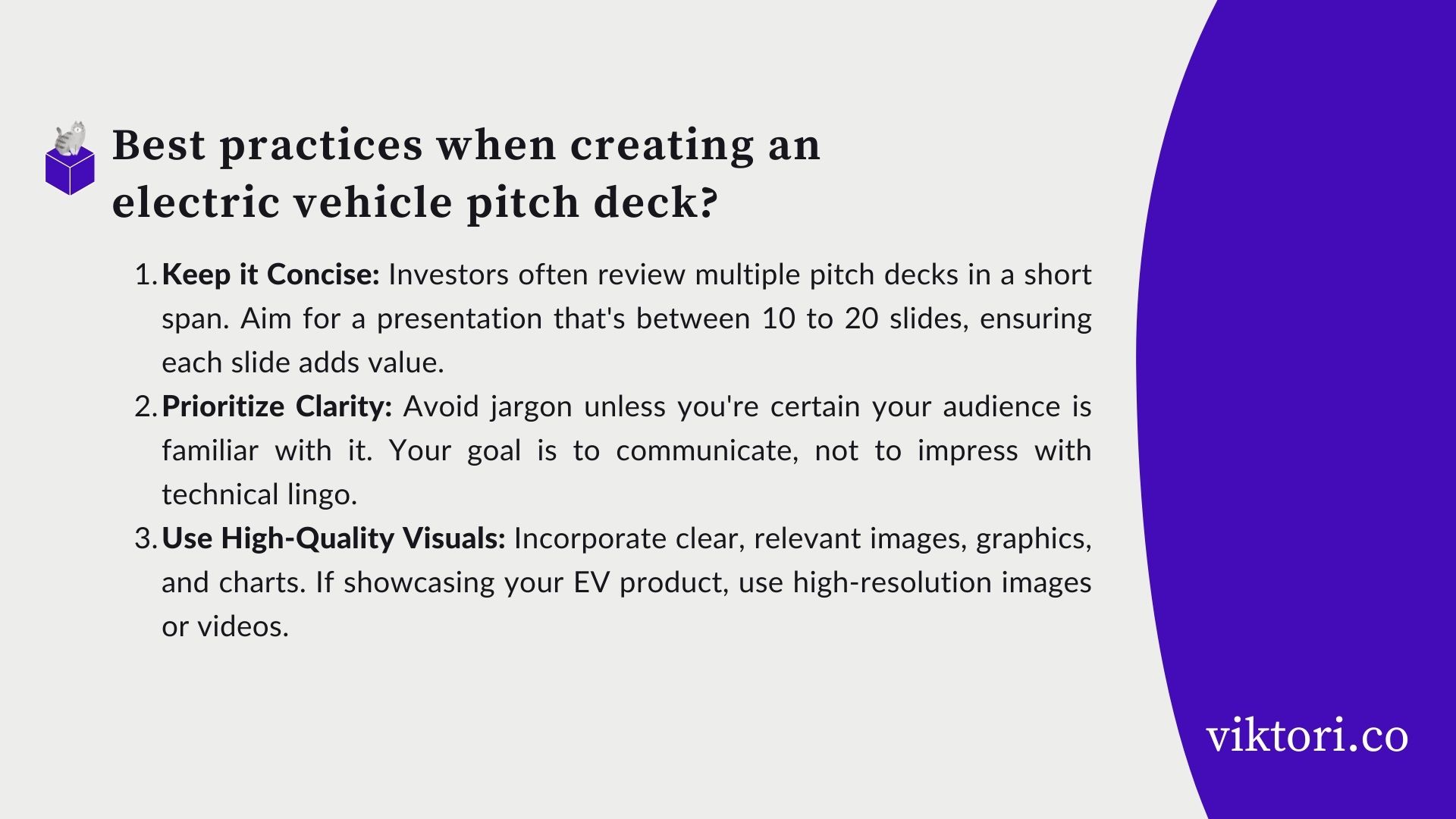
Creating an electric vehicle (EV) pitch deck that resonates with investors requires a blend of clarity, precision, and engagement.
Here are some best practices to ensure your pitch deck stands out:
- Keep it Concise: Investors often review multiple pitch decks in a short span. Aim for a presentation that’s between 10 to 20 slides, ensuring each slide adds value.
- Prioritize Clarity: Avoid jargon unless you’re certain your audience is familiar with it. Your goal is to communicate, not to impress with technical lingo.
- Use High-Quality Visuals: Incorporate clear, relevant images, graphics, and charts. If showcasing your EV product, use high-resolution images or videos.
- Data-Driven Approach: Back your claims with credible data. Whether it’s market size, growth projections, or technological advantages, use statistics and research to bolster your points.
- Narrative Flow: Structure your pitch deck like a story, ensuring a logical progression from introducing the problem to showcasing your solution and asking for investment.
- Engage with Stories: Personal anecdotes or customer testimonials can make your pitch more relatable and memorable.
- Consistent Design: Maintain a cohesive design theme throughout, including consistent fonts, colors, and layouts. This enhances readability and professionalism.
- Interactive Elements: If possible, incorporate interactive elements like clickable prototypes or short demos, especially if they can showcase your EV product’s unique features.
- Practice, Practice, Practice: Rehearse your pitch multiple times. Familiarity with your content will allow you to present with confidence and handle unexpected issues, like technical glitches.
- Tailor to Your Audience: Understand who you’re pitching to and customize your presentation to address their specific interests, concerns, or investment history.
- End with a Clear Ask: Whether you’re seeking a specific amount of funding, partnerships, or mentorship, be clear about what you want from your audience.
- Feedback Loop: Before finalizing, seek feedback on your pitch deck from mentors, peers, or industry experts. Fresh eyes can offer invaluable insights.
- Stay Updated: The EV industry is dynamic. Ensure your pitch deck reflects the latest trends, technologies, and market insights.
- Mobile Optimization: Some investors might view your pitch deck on mobile devices. Ensure it’s optimized for different screen sizes.
- Prepare for the Follow-Up: Anticipate that investors will request additional information post-presentation. Have supplementary materials, like detailed financial models or technical specs, ready to share.
In essence, an effective EV pitch deck is a harmonious blend of content, design, and delivery.
It’s your first impression, your persuasive tool, and often, the key to unlocking the doors of opportunity.
Speaking of making an impression, let’s delve into some real-world examples of successful EV pitch decks. Curious to see who’s leading the charge?
EV Pitch Deck Example
Ready to have your mind blown? Meet One – the EV that’s kicking up a sandstorm of excitement and is all set to zoom across Mars-like deserts without breaking a sweat. This isn’t your average pitch deck; it’s the cool cousin that arrives at the family reunion with a jetpack. One is for the rebels who wear sand in their hair like a crown and want their rides eco-friendly, fast, and futuristic.
If the above slides won’t open, check out the following galery:
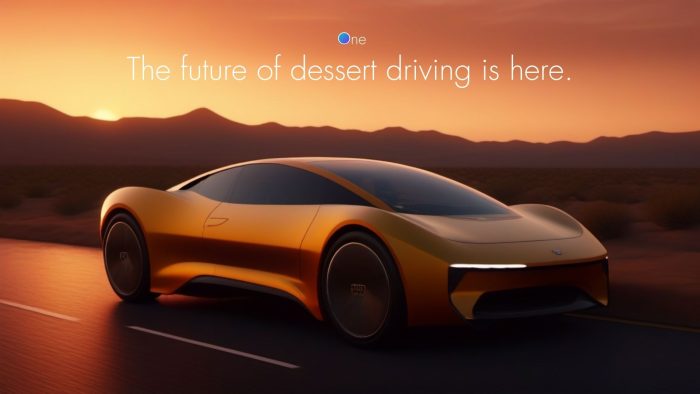
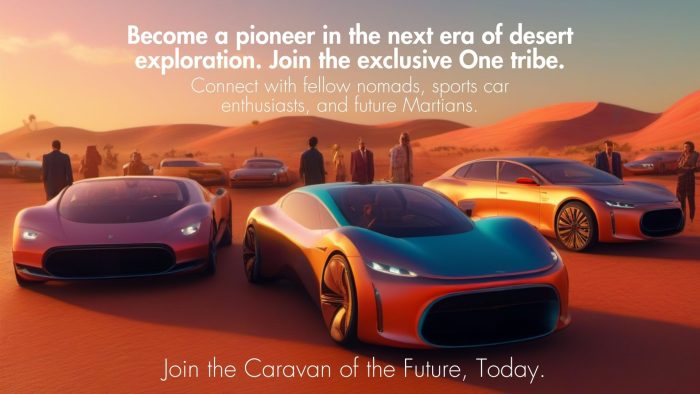
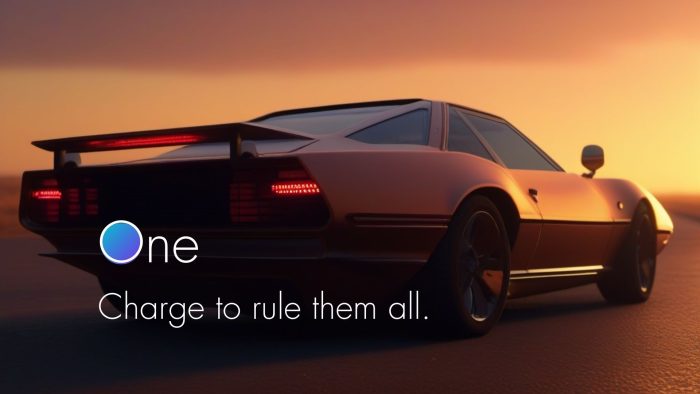

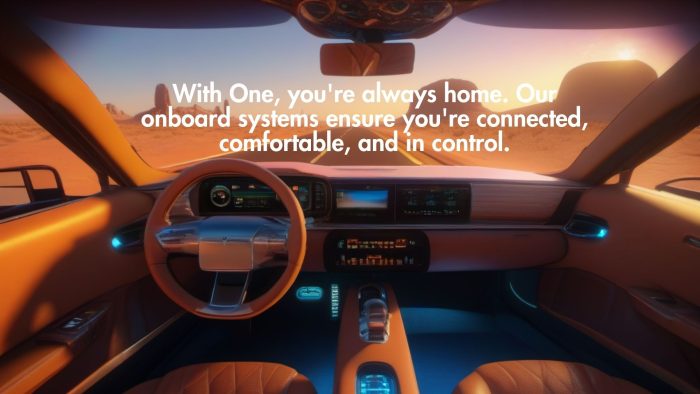
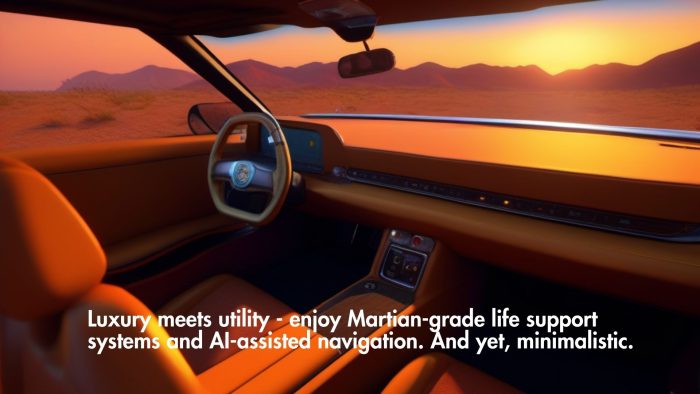
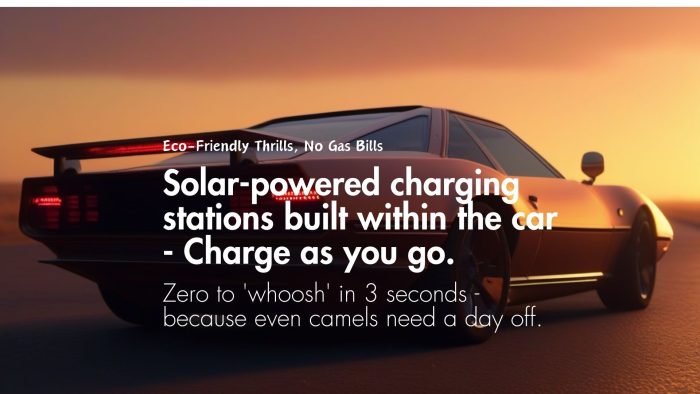
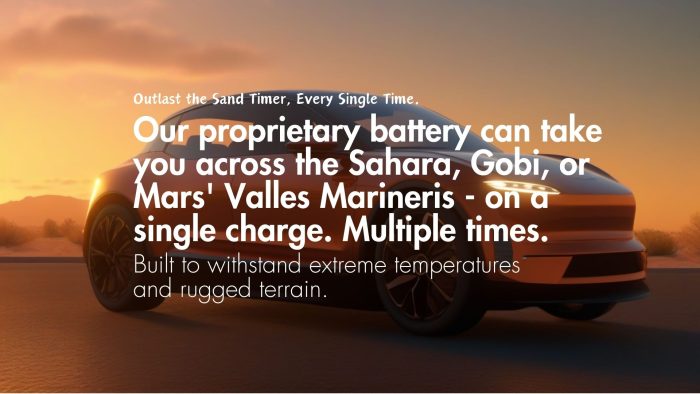
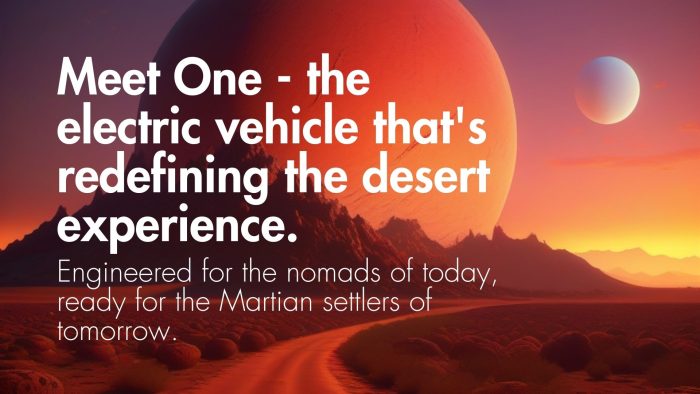
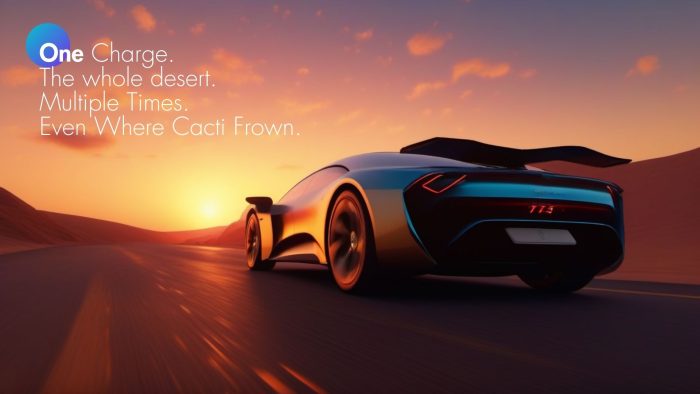
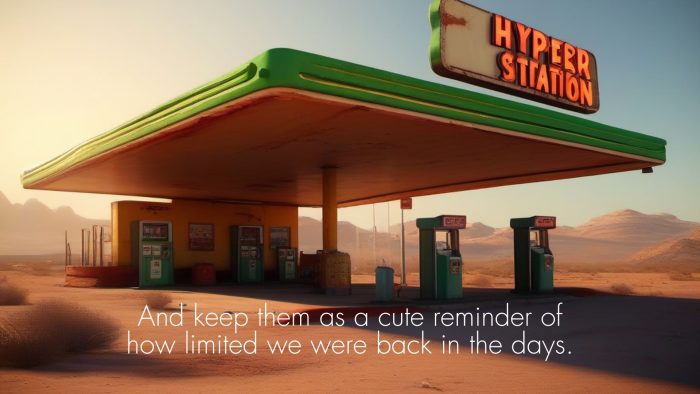


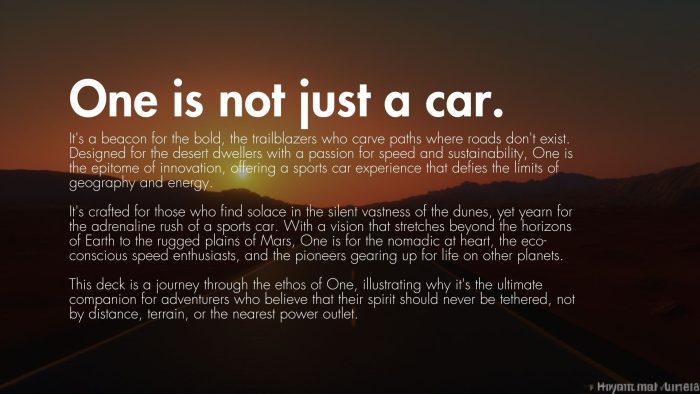
While we’re on the topic of breakthrough ideas check this instagram reel showing an “ingenious invention“.
EV Startups And How Much They Raised
Here are some successful electric vehicle startups, their specific niche, and the funding they’ve raised:
| Startup Name | Country | Specific Niche/Description | Funding Raised |
|---|---|---|---|
| Tesla | USA | Accelerates the transition to electric mobility with a range of electric cars, Solar Roof, home batteries, and large solar stations. | $20.2B |
| Rivian | USA | Automotive technology company developing products and services for sustainable mobility. | $12B |
| Lucid Motors | USA | Silicon Valley company that designs, develops, and builds electric vehicles. | $11.3B |
| Xiaopeng Motors | China | Electric vehicle and technology company designing and manufacturing smart cars. | $6.4B |
| Nio | China | Global Chinese company designing and developing electric autonomous vehicles. | $6.2B |
| WM Motor | China | Develops electric vehicles aimed at the mainstream market. | $5.3B |
These startups have made significant strides in the electric vehicle industry, showcasing innovation, technology, and a vision for a sustainable future. Their success in raising substantial funding underscores the growing interest and belief in the potential of electric vehicles.
Next, let’s dive into some hypothetical examples of electric vehicle pitch decks based on different business ideas. Ready to get charged up?
EV Pitch Deck Ideas To Inspire You
Here are some hypothetical electric vehicle (EV) pitch deck examples based on diverse business ideas:
1. EcoDrive: Urban Electric Car-Sharing Service
- Slide 1: Logo & Tagline
- EcoDrive: “Drive Green, Live Clean”
- Slide 2: Problem Statement
- Urban congestion and pollution are on the rise. Traditional car ownership is costly and inefficient.
- Slide 3: Solution
- Introducing EcoDrive: An urban EV car-sharing service. Affordable, accessible, and eco-friendly.
- Slide 4: Market Size
- 50 million urban commuters in our target cities. Potential $5 billion market.
- Slide 5: Business Model
- Subscription-based access. Pay-per-use pricing.
- Slide 6: Unique Selling Proposition
- First to offer one-way trips. Advanced booking system. Green charging stations.
2. PowerGrid: Solar-Powered EV Charging Stations
- Slide 1: Logo & Tagline
- PowerGrid: “Sun-Powered Speed”
- Slide 2: Problem Statement
- Growing EV market but limited green charging infrastructure.
- Slide 3: Solution
- Solar-powered EV charging stations. Clean energy for clean vehicles.
- Slide 4: Market Size
- 2 million EVs sold annually. Potential to serve 500,000 vehicles daily.
- Slide 5: Business Model
- Installation partnerships with businesses. Revenue from charging fees.
- Slide 6: Unique Selling Proposition
- 100% renewable energy. Fast-charging tech. 24/7 availability.
3. TechRide: Autonomous Electric Taxi Service
- Slide 1: Logo & Tagline
- TechRide: “Future of Urban Commute”
- Slide 2: Problem Statement
- Urbanites need safe, efficient, and eco-friendly transport options.
- Slide 3: Solution
- Autonomous EV taxi service. On-demand, safe, and green.
- Slide 4: Market Size
- Targeting 10 major cities with a combined population of 80 million.
- Slide 5: Business Model
- App-based hailing. Dynamic pricing based on demand.
- Slide 6: Unique Selling Proposition
- State-of-the-art safety features. Zero-emission rides. Seamless user experience.
These are just a few hypothetical examples to illustrate the potential diversity in the EV space. Each pitch deck is designed to address a specific problem, offer a unique solution, and highlight the business’s value proposition.
If you want to see the fleshed out version for each of these ideas, head over to my ev pitch deck guide business ideas and pitch deck outlines article.
Next, let’s explore the questions that investors might ask EV pitch deck owners. Ready to dive in?
Questions That Investors Ask Electric Vehicle Pitch Deck Owners:
When presenting an electric vehicle (EV) pitch deck, investors will have a range of questions to gauge the viability, potential, and risks associated with your venture. Here are some common questions that EV pitch deck owners might encounter:
- Market & Demand:
- What’s the current market size for your specific EV niche?
- How do you foresee the growth of the EV market in the next 5-10 years?
- Who are your target customers, and what’s the demand projection?
- Competitive Landscape:
- Who are your main competitors, and how do you differentiate from them?
- What barriers to entry exist in your niche to prevent new competitors?
- Technology & Innovation:
- What proprietary technology or innovation does your EV solution offer?
- How do you plan to stay ahead of technological advancements in the industry?
- Business Model & Monetization:
- How do you plan to generate revenue?
- What’s your pricing strategy, and how did you arrive at it?
- Operational Aspects:
- Where will your EVs be manufactured, and what’s the production capacity?
- How do you handle supply chain challenges, especially concerning battery sourcing?
- Regulatory & Compliance:
- Are there any regulatory challenges in your target markets?
- How do you ensure compliance with safety and environmental standards?
- Financials:
- What are your projected revenues and expenses for the next 3-5 years?
- How long until you anticipate reaching profitability?
- Team & Expertise:
- What experience does your team bring to the table, especially in the EV sector?
- Are there any key hires or partnerships you’re planning to bolster your expertise?
- Funding & Use of Capital:
- How much funding are you seeking, and how do you plan to allocate the capital?
- What milestones will this round of funding help you achieve?
- Exit Strategy:
- Do you have an exit strategy in place, such as an acquisition or IPO?
- What’s your projected timeline for providing returns to investors?
- Risks & Contingencies:
- What are the primary risks associated with your venture, and how do you plan to mitigate them?
- Do you have contingency plans for potential challenges like supply chain disruptions or regulatory changes?
- Customer Feedback & Traction:
- Have you conducted pilot tests or initial sales? What has been the feedback?
- What traction have you gained so far, and what are your customer acquisition strategies?
Being well-prepared to address these questions will not only demonstrate your thoroughness but also instill confidence in potential investors about the viability and potential of your EV venture.
With that covered, let’s wrap things up with a conclusion. Ready for a light-hearted yet insightful sign-off?
Conclusion
In the electrifying world of EVs, we’ve journeyed through pitch decks, tackled investor queries, and charged up our knowledge batteries.
As we park this discussion, remember: the road to EV success isn’t always a smooth highway; sometimes, it’s a path with speed bumps, unexpected detours, and the occasional flat battery.
But with the right pitch deck as your GPS and a trunk full of determination, you’re set to drive into the sunset of success.
And hey, if you ever feel you’re running low on energy, just plug into your passion, give it a quick charge, and zoom ahead!
After all, in the EV business, it’s all about staying positively charged and avoiding any “shocking” surprises. So, gear up, fasten your seatbelts, and let’s accelerate into a greener, cleaner, and wittier future. Honk if you’re excited!
You got this!
But if you don’t got it:
Join hundreds of successful entrepreneurs who’ve transformed their pitch decks with my help.
Let me develop an investor ready deck by using my hands-off approach, which includes: market research, copy, design, financials, narrative and strategy.
One week turnaround time.
The least you will get is 10 actionable tips & strategies to own that next presentation, worth $599, for free.

More Resources:
Check out my cornerstone guide on pitch decks, the secret sauce behind my clients’ $100,000,000+ funding endeavours:
This guide will break down:
- The basics of creating slides that make an impact (including stuff like the quick summary slide and the breakdown of finances)
- Examples of pitch decks from real startups
- What investors are looking for
- The essentials for a killer pitch deck
- The absolute things you should avoid in a pitch deck
- Useful tips and tricks for a knockout pitch presentation
If you want to really dive into the world of pitch decks, check out our complete collection of pitch deck guides, and pitch deck outlines.
Or, check out some of the best guides right here:
Also don’t miss out on my massive presentation specialist guide, last minute presentations and best business projector buyers guide.

